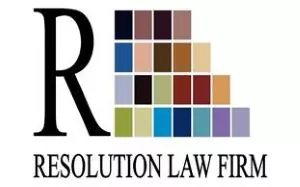A Certificate of Occupancy (C of O) is a critical document in real estate and land ownership in Nigeria. It serves as official proof of a person's legal right to occupy and use a piece of land or property. This article explains an in-depth look at what a Certificate of Occupancy entails, its importance, and the process of obtaining one in Lagos and other parts of Nigeria.
A Certificate of Occupancy is a statutory document issued by the government that confirms the legal ownership and right to use a parcel of land or property for a specified period. In Lagos, as in other parts of Nigeria, this document is issued by the Land Registry under the Lagos State Government. The primary purpose of the C of O is to provide legal security to property owners and to standardize land transactions, ensuring that land ownership is recognized and protected by law.
Legal Framework
The issuance and regulation of the Certificate of Occupancy in Lagos are governed by the Land Use Act of 1978. This Act centralizes land administration under the State Governor, who has the authority to grant land rights and issue Certificates of Occupancy. Under this law, all land in Lagos is held in trust by the Governor for the benefit of the citizens. Therefore, the C of O essentially represents a leasehold interest, where the property holder has the right to use the land for a period of 99 years or less, subject to renewal. The highest title that can be obtained under the land tenure system in Nigeria is a leasehold; therefore, all certificates of occupancy are issued for a definite period of time, subject to renewal.
Importance of the Certificate of Occupancy in Nigeria
- Legal Proof of Ownership: The C of O is one of the primary legal documents that prove ownership of land or property. It is crucial for protecting property rights and preventing disputes over land ownership.
- Facilitates Transactions: When buying or selling property, having a C of O simplifies the transaction process, as it assures the buyer of the seller's legal right to transfer ownership. It is also necessary for securing loans and mortgages from financial institutions.
- Property Development: For property developers, the C of O is a relevant document for obtaining permits and approvals from government agencies. It confirms that the land is legally recognized and can be developed in accordance with land use regulations and planning laws.
The Process of Obtaining a Certificate of Occupancy in Lagos
Certificates of Occupancy are usually issued by the government to the lands directly allocated by the government, it is also issued for lands that have never had any form title but with verifible owner. Therefore, any person owning a land or having a statutory right on land can also apply for C of O if the land does not have any other existing title. C of O is not the only title that can be obtained for land under Nigerian law. A land that already has a registered deed (Governor Consent) does not require C of O again. Obtaining a Certificate of Occupancy involves several steps and requires compliance with specific regulations. Here is a general outline of the process of applying for a C of O on a land without an existing title:
- Apply for a Survey: Obtain a registered survey for the land. The survey document is required to make an application for the C of O.
- Application Submission: Prepare and submit an application for the C of O to the Lagos State Land Registry. The application must include various documents, such as proof of land ownership, a survey plan, and identification documents.
- Payment of Fees: Pay the necessary fees for processing the application. The fees can vary based on the size and location of the land. Ensure that all payments are made in accordance with the guidelines provided by the Land Registry.
- Inspection and Verification: The Land Registry will conduct an inspection of the land to verify the information provided in the application. This may include a physical inspection and verification of the survey plan.
- Approval and Issuance: If the application meets all requirements and passes the verification process, the C of O will be issued. The document will state the details of the land, the holder's rights, and the lease period.
- Collection: Collect the Certificate of Occupancy from the Land Registry office once it has been processed and approved. Ensure that all details are accurate and that you receive the official copy of the certificate.
Challenges and Considerations
While obtaining a Certificate of Occupancy is a crucial step in property ownership, there are several challenges and considerations to be aware of:
- Bureaucracy and Delays: The process can be time-consuming due to bureaucratic procedures and potential delays in processing. It is essential to be patient and follow up regularly.
- Cost: The cost of obtaining a C of O can be significant, including fees for application, surveying, taxation and legal services. Budgeting for these costs is important.
- Legal Compliance: Ensure that all documents and procedures comply with legal requirements to avoid complications. Consulting with a legal professional or real estate expert can be beneficial.
- Land Disputes: Be aware of any existing land disputes or claims before applying for a C of O. Resolving such issues beforehand can prevent delays and legal complications.
- Changes in Regulations: Stay informed about any changes in land regulations or policies that may affect the C of O application process. Regulations can change, and it's important to comply with current laws.
In conclusion, the Certificate of Occupancy is a vital document for land and property owners in Nigeria. It provides legal proof of ownership and the right to use land or property. Obtaining a C of O involves several steps, including a survey, application submission, and payment of fees. While there are challenges and considerations, understanding the process and requirements can help streamline the process.
The content of this article is intended to provide a general guide to the subject matter. Specialist advice should be sought about your specific circumstances.


